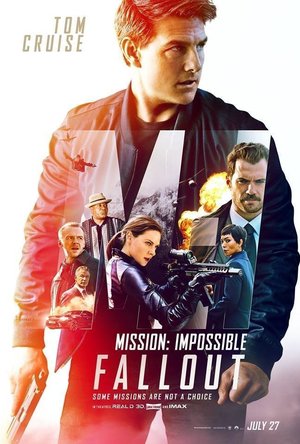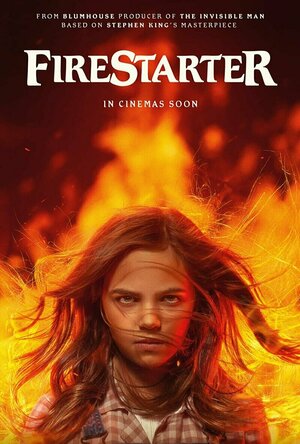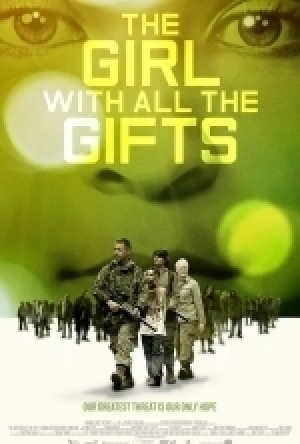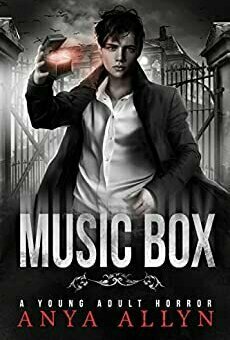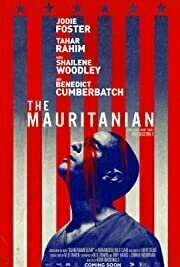
Dwarf Fotress
Video Game Watch
Dwarf Fortress is a single-player fantasy game. You can control a dwarven outpost or an adventurer...

Topo Maps+
Navigation and Travel
App
Go Deeper into the Backcountry. ** ZDNet's 24 Best iPhone or iPad apps for 2017 ** Featured in Apps...
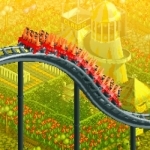
RollerCoaster Tycoon® Classic
Games and Entertainment
App
RollerCoaster Tycoon® Classic is a new RCT experience, combining the best features from two of the...

Paris By Metro – Easy subway, Train & Tram Maps
Travel and Navigation
App
VISITING PARIS? Let Paris By Metro help you see more of the city and suburbs without getting lost -...
Bob Mann (459 KP) rated Mission: Impossible - Fallout (2018) in Movies
Sep 28, 2021
The film neatly follows on from Rogue Nation with arch terrorist-in-need-of-a-razor Solomon Lane (Sean Harris) being extraordinarily renditioned (probably not a valid phrase!) between multiple countries who want to torture/punish him. But his followers – “The Apostles” – are still active and on the trail of plutonium that could devestate key sites, with religious centres being the top of the target list. Since Ethan Hunt (Tom Cruise) originally caught Lane, IMF Director Hunley (Alec Baldwin) despatches Hunt to intercept the plutonium.
But CIA director Erica Sloan (Angela Bassett) has no faith in the IMF, or trust that the organisation has not been infiltrated, and she insists that her ‘heavy’ August Walker (Henry Cavill) goes along for the ride. But they are not the only parties in play, for Isla Faust (Rebecca Ferguson) is also involved. But who is she working for?
What makes these films a cut above your average action adventure is the stunt work, with the knowledge that Cruise is at the centre of the action. In “Skyscraper” you KNOW Dwayne Johnson is standing on the ‘edge’ in front of a big green screen. Similarly here you KNOW Cruise is standing on the edge of the Tate Modern tower – probably without a safety line – as the camera goes 360 degrees around him. This makes all the difference to the adrenalin count.
There are some outstanding set pieces in the film, with extraordinarily spectacular shots from a ‘halo jump’ and a dramatic helicopter finale. But it is some of the smaller stuff that really impresses: a dramatic edge-of-the-seat car and motorbike chase through central Paris is one of the most impressive and terrifying things I’ve seen on film for many years; and Cruise’s literally bone-crunching run through London is also extremely exciting, with Simon Pegg adding good humour in his regular role of Benji. By the way, series regulars Ving Rhames, as Luther, and Michelle Monaghan, as Hunt’s ex-wife Julia, also make welcome returns but Jeremy Renner is missing this time.
Tom Cruise at 56 (he’s just 15 months younger than I am, damn it!) will eventually meet a Roger Moore-like Bond cliff when his Hunt role is no longer credible. But he’s not there yet! Rebecca Ferguson is again outstanding as Faust and as a newcomer in a similar role Vanessa Kirby (memorable as Princess Margaret in “The Crown”) impresses as the “White Widow” – someone with a familial link to a villain from the past!
Unusually, for a film series which has traditionally been kept fresh by changing directors and composers at each turn, Christopher McQuarrie (“Edge of Tomorrow“, “The Mummy“) returns following “Rogue Nation“, and he also writes the screenplay. The composing baton is handed over this time though to Lorne Balfe (“Churchill“, “Terminator: Genisys“) and for me this was a bit of a step down from the “Rogue Nation” soundtrack by Joe Kraemer which I really enjoyed.
Is it sufficiently fresh though? Let’s be clear here, I was enormously entertained throughout, and this should be near the top of your summer watch list. But it did ultimately feel at times a little like a light retread of “Rogue Nation“. Some of the stunts – notably the Paris and London scenes as above – were a step up for me, but there are some annoyances in McQuarrie’s script (see the spoiler section below the trailer), so for me the rating plateaus at the same as “Rogue Nation“.
BankofMarquis (1832 KP) rated FIRESTARTER (2022) in Movies
May 21, 2022
I watched the remake of the Stephen King novel FIRESTARTER, so you don’t have to.
The current “leader in the clubhouse” for the worst film of 2022, FIRESTARTER is based on the very good Stephen King novel that was published in 1980 and was made into a pretty cheesy, pretty ‘80s flick in 1984 that made Drew Barrymore (fresh off her work in ET) a bonafide movie star.
No such luck in this one.
Produced by Blum House, Directed by Keith Thomas (THE VIGIL) and adapted from King’s novel by Scott Teems (HALLOWEEN KILLS), this version of FIRESTARTER was dead on arrival, with a weak script, mediocre directing and less than stellar visual effects, consequently making a film that is the worst sort of film…boring. It doesn’t even have the ambition to be “so bad, it’s good”, it is just plodding and mediocre throughout.
But, at 1 hour 34 minutes, it is mercifully short, so it does have that going for it.
What it also has going for it is a “game” Zach Efron as “Firestarter’s Father” and he elevates the scenes he is in to something that comes close to watchable. And when Sydney Lemmon is along as “Firestarter’s Mom” the screen comes the closest to interesting. But the rest…”meh”.
Ryan Kiera Armstrong plays “Firestarter”, Charlie McGee - the young lady who can start fires with her telepathic powers - and she is “just fine”, but she does not have the star power or “it” factor that Barrymore brought to the proceedings previously. She is just not a compelling enough presence on screen to save this turkey. I don’t blame her, I blame the weak Direction by Thomas and the limp script by Teems.
The only other character/performance that sparks some interest in this film is Michael Grayeyes (TOGO) who plays a Native American tracker with his own telekinetic powers who is put on the trail of Charlie by the mysterious Institute (a shadowy Gov’t agency that chases after various “special” people - mostly kids - in quite a few Stephen King novels). Inexplicably, this role was played by an aging, pony-tailed George C. Scott (obviously chasing a paycheck) in the 1984 film. Grayeyes succeeds more.
But these glimmers of competence only aggravates more when the film bogs back down in cardboard villains (what has happened to your career, Gloria Ruben) and exposition spouting scientists (what a waste of Kurtwood Smith) and less than spectacular action sequences that, mostly, consist of Armstrong screaming while a wind machine blows her hair back while sub-par CGI flames engulf the screen.
And…adding insult to injury…the "guy in the asbestos suit” (a mainstay of any film involving fire) does not even get a day of stunt pay! It’s like going to see a Tom Cruise Mission Impossible film and Cruise doesn’t do some sort of crazy stunt!
After the success of IT, PART ONE in 2017, there was a renaissance, of sorts, of adaptations of Stephen King works and even though PET SEMATARY (2019) was pretty decent and IT, CHAPTER TWO and DOCTOR SLEEP (2019) were okay, THE DARK TOWER, the TV remake of THE STAND, LISEY’S STORY and now FIRESTARTER were all terrible, so maybe we’ve seen the end of this phase of King adaptations (I doubt it, but one can hope).
Save yourself and hour and a half of your life and skip this Firestarter. Instead, revisit the 1984 version - it plays like an Oscar-winner compared to this turkey. Or, better yet, read the original Stephen King work - it is the best of all of these.
Letter Grade: C- (and I’m being generous)
3 stars (out of 10) and you can take that to the Bank(ofMarquis).
Charlie Cobra Reviews (1840 KP) rated The Girl With All the Gifts (2017) in Movies
Nov 1, 2020
In a post-apocalyptic future, that has been ravaged by a mysterious fungal disease, those infected have turned into fast, mindless zombies, called "hungries.” A small group of hybrid children who crave human flesh but retain the ability to think and feel, go to school at an army base in rural Britain. There they're subjected to cruel experiments by Dr. Caroline Caldwell (Glenn Close). An exceptional girl named Melanie (Sennia Nanua), grows particularly close to school teacher Helen Justineau (Gemma Arterton) and forms a special bond. When the base is invaded, the trio escape with the assistance of Sgt. Eddie Parks (Paddy Considine) and embark on a perilous journey of survival, during which Melanie must come to terms with who she and what she is.
This movie was really good. I really liked the concept and felt it delivered on the premise and didn't fall through. The little girl Melanie played by Sennia Nanua did an excellent job and I was surprised with how much I wound up liking her character. Gemma Arterton was very good as Helen too and Glenn Close just blew me away as the scientist Dr. Caroline Caldwell. Some of the zombie makeup and special effects weren't the best in certain scenes when they slow walk through some dormant zombies but nothing that horrible that I saw. And I didn't like a couple of scenes with another kind of zombies too but more of that in the spoilers section. The action was really spot on and this movie didn't shy away from blood or gore but also didn't seem to really overly depict any gruesome scenes. It did however show the aftermath of some particularly nasty kills. I have to say this was one of the better zombie movies I've seen and I give it a 7/10 as well as my "Must See Seal of Approval". Definitely check out this zombie movie.
Spoiler Section Review:
As I said above, I really liked this zombie movie. The whole concept intrigued me as it looked like they were a bunch of children prisoners in the trailer. And the part where they man puts his arm in front of them and they start chomping at it made me think that they were somehow part zombies or something; which they were. Really the little girl Melanie made the movie work because her character was so interesting. I enjoyed seeing her character growth and how she viewed the world and how they others interacted with her. It's so awkward in the beginning seeing how the soldiers and others react to them even though their children yet when you see the soldier make that point to the teacher you realize with the rest of the audience that these aren't normal children. I really like how they show she has these instincts that she tries really hard to fight against and how it's too hard sometimes. The action is pretty decent in this movie and some pretty cool fight scenes from some of the kid zombies was a cool surprise too and rather epic. The ending totally threw me off and I never thought It would end like that but now that I think about it, it did kind of foreshadow it by Glenn Close telling Melanie how the seed spores would open, still to end the world by lighting that spore tower on fire was shocking to say the least. Like I said I give this movie a 7/10 and it gets my "Must See Seal of Approval" and definitely see this movie if you haven't already.
Heather Cranmer (2721 KP) rated Music Box (Dark Carousel #4) in Books
Nov 23, 2020
Cassie has given up hope of not being Balthazar's bride. She's about to just give in to it when she finds a way to the tower where the spooky figure she has seen lives. Scared as she is of the figure, she decides to investigate and is shocked to discover who the figure is. Cassie, with the help of her friends, must find some way to defeat the serpent shadows before they take over the Earth all while battling the humans and spirits of the castle. While she and her friends put their lives in great peril, they never give up hope of returning the Earth to its former glory.
The plot of Music Box did a fantastic job of holding my attention throughout. While there are some parts of this novel that are a bit too fast paced like in previous books in the series, for the most part, the pacing is easy to follow along with. There are a few plot twists that I wasn't able to predict. There was so much action going on in Music Box, and I loved it. It wasn't overwhelming, and it was underwhelming. Anya Allyn did a fantastic job with getting the ratio of action to narrative perfect! I did have a feeling that one of the characters in the Dollhouse would make an appearance, and I wasn't wrong. I liked the way all the loose ends from the previous books in the series were all tied up nicely. While I wasn't really a fan of how the book ended, I will say that it didn't have a rushed ending feel. I just wish things would have turned out a bit differently. However, I did love how the author explains more of the ending and what she believes happened to all the other characters in the afterword, so definitely don't skip out on reading the afterword!
As always, Anya Allyn was amazing at making her characters come alive. It was so easy to relate to all of them (bad guys and girls aside). Cassie was even more hardcore in this book! I loved how Cassie was willing to sacrifice everything to protect her friends and others. Ethan was the same as Cassie. He tried to protect innocents from the bad guys. While I liked Molly, I still don't think her character was needed, same with Frances. Don't get me wrong, they are great characters and written really well, but they seemed a bit pointless. I was happy about Aisha in this book. (I won't go into greater detail due to minor spoilers.) I absolutely loved Zack, and I was always secretly hoping that Cassie would end up with him. Zack turned out to be such a gentlemen from the second book. I loved how he was willing to cut ties from his family to help Cassie even though he knew it was an unrequited love. Henry was another character that I really loved. I felt that he wasn't all bad and that there was some good in him. The book he was seeking in the novel was what brought out the bad. He did have a bunch of redeeming qualities though. I was overjoyed that Jessamine was finally featured a bit more in this book! Jessamine has been my favorite character throughout this series. I was thrilled with how her story ended. I always knew she'd turn out to be awesome!
Trigger warnings for Music Box include violence, death, murder, suicide, attempted rape, minor swearing, the occult, and imprisonment.
While I'm devastated that the Dark Carousel series has come to an end, I am so grateful that Music Box was a great read. All of the characters were still so amazing, the story was thrilling, and everything was so nicely explained. I would definitely recommend Music Box (and all of the Dark Carousel series) by Anya Allyn. If you want a book with lots of action and a great cast of characters, this is your book. Do be prepared to suffer from a book hangover when you're done reading it though!
Bob Mann (459 KP) rated The Mauritanian (2021) in Movies
Apr 14, 2021
“The Mauritanian” then is the true story of one such unfortunate – Mohamedou Ould Slahi, played by Tahar Rahim. We first join Slahi at a family wedding in Nouakchott (good “Pointless” answer for the capital of Mauritania people!). ‘Invited for questioning’ by the American authorities, we next see Slahi in the Cuban stronghold.
Pro-bono lawyer Nancy Hollander (Jodie Foster) becomes a pariah by picking up his defence. Supporting her is assistant Teri Duncan (Shailene Woodley). Hollander is very formal and professionally aloof, not assuming his guilt or innocence. After meeting the man, and assuming his innocence, Duncan though is more emotionally involved. The man opposing them at trial is US Army prosecutor Stuart Couch (Benedict Cumberbatch). Couch, having lost one of his best friends aboard the South Tower plane, has an axe to grind.
As the pair battle unseen forces for access to documentation, they uncover more and more of the truth about life in Guantánamo Bay.
Positives:
- I've not read the book so I found the story gripping. As the related legal information is divulged, the movie drip-feeds flashbacks of Slahia's story, which is clever.
- Acting wise, "The Mauritanian" has top notch stuff. Tahir Rahim is excellent as Slahia. He portrays charismatic and confident businessman, brought down to earth with a bump. Not recognizing him with an Oscar nomination feels like a minor crime. He will have to make do with the BAFTA nomination. Also brilliant is Jodie Foster. As the illustrious Mrs Movie Man pointed out, it's so nice to see an actress acting her age with confidence. The ever-watchable Shailene Woodley is also great, especially in a dramatic 'dismissal' scene. She adds some much needed warmth to the legal team. The southern drawl from Cumberbatch is a bit of a surprise and takes some getting used to. But it's still a strong performance from him.
- After ranting on last time at Zack Snyder's use of 4:3 screen ratios in "Justice League", here is an intelligent use of the technique. The film is in 16:9 ratio, but then pivots to 4:3 for all of the Guantanamo flashback scenes, reflecting the claustrophobia of Slahia's position.
- Real-life footage over the closing titles is absolutely fascinating.
Negatives:
- I personally didn't find this a particular negative, but I went into the film knowing it to be a "legal drama". So there would be lots of scenes, as in "The Trial of the Chicago 7", with courtroom debate and gavel-banging, right? Actually, there is almost none of that. Most of the legal action is in terms of the preparation of the case and the paperwork involved. (If this makes the movie sound excruciatingly dull... think again!)
- The Guantanamo story ends quite abruptly (with the above-mentioned jolt), and left me wanting to see more of the intervening time. It's not often that I complain about a film running too short, but here is one where just a little of "the Snyder treatment" might have been welcomed!
Additional Note for the squeamish: For those worried about seeing distressing scenes of torture (e.g. Fingernail extraction, etc), these are - although disturbing - more of the "psychological torment" type. So those of a squeamish disposition can still watch this one.
Summary Thoughts:
The fact that "The Mauritanian" is a true story hammers home just what the US has been up to over the last 20 years. War crimes are not only committed on the battlefield.
Director Kevin Macdonald is no stranger to documentaries ("Touching the Void", "Whitney"). He's also proved adept at bringing gripping true stories to the screen (having previously given us "The Last King of Scotland"). Here, the emotional journeys of the key characters are well observed making the movie 'highly recommended'.
For the full One Mann's Movies review see here - https://bob-the-movie-man.com/2021/04/09/the-mauritanian-america-are-you-squirming-with-embarrassment/

